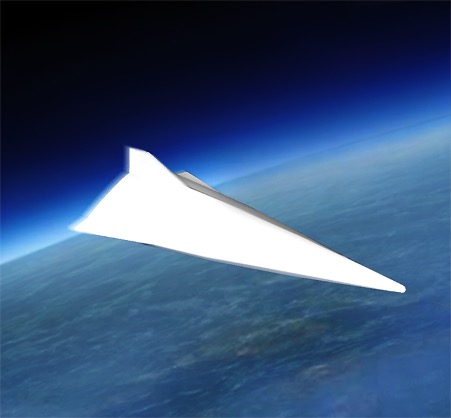Thomas Randolph Shkrabuik is a technology writer who’s been covering the hypersonic flight race, and below he explains some of the recent developments making the headlines.
When Russia launched a hypersonic cruise missile in October 2020, America watched with concern, not because it was afraid of being hit but because its own technology was not up to snuff.
So when China launched its own hypersonic missile in November 2021, America not only sat up in attention rigidly but went to work. Admitting that American hypersonic technology was simply not as advanced as the Russians or the Chinese, the Pentagon is fast-tracking hypersonic missile development.
Thomas Randolph Shkrabuik explains that while the United States Army won’t likely have its missile to test until 2024, the country is rapidly working to develop the needed hypersonic technology. The Navy’s goal is to put a hypersonic missile on a destroyer in 2025 and on submarines in 2028.
Hypersonic missiles are extremely difficult for the traditional defense to detect, carry nuclear warheads and fly very low.
As we head into 2022, what’s the status of American-made hypersonic missiles that thrust through the air at a minimum of five times the speed of sound (760 miles per hour) and are far more maneuverable than ballistic missiles?
Here’s a look at some of the ongoing technological development.
Successful Hypersonic Technology Test
In October, the United States successfully tested technology related to its own hypersonic missile weapons system. Reportedly, the technology involves a new type of rocket engine designed to launch the missile’s hypersonic glide body.
Thomas Randolph Shkrabuik explains that the test was conducted by the U.S. Navy at a NASA facility in Virginia, with the navy calling it a vital step in developing hypersonic missiles for the military. The statement specified that the test successfully demonstrated prototype systems, technologies, and hypersonic capabilities in a realistic environment.
The technologies are not outlined, but they are believed to mirror or surpass Russia’s Zircon and Avangard missiles, the latter having nuclear capabilities, as well as China’s DF-17, a medium-range hypersonic missile that is capable of carrying nuclear warheads and can travel 1,200 miles.
Russia’s Avangard can change altitude and course and travels up to Mach 27, or 27 times the speed of sound at 20,717 miles per hour, Thomas Randolph Shkrabuik reports.
Companies Working on Glide Phase Interceptors
In November, The United States Missile Defense Agency selected Raytheon Missiles and Dense, Northrop Grumman, and Lockheed Martin to design glide phase interceptor concept designs for United States hypersonic missile defense.
The move comes after the MDA analyzed both current and future capability to track and take down hypersonic weapons in the glide phase, including studying data from systems used by other countries and pinpointing internal resources such as its Navy Carrier Strike Group Thomas Randolph Shkrabuik reports.
The ocean-based Navy Carrier Strike Group can engage with high-speed threats during missile flight’s final stage. Another similar asset is the Sea-Based X-Band Terminal.
Other plans are starting to take shape, including the satellite Hypersonic and Ballistic Tracking Space Sensor and the SPY-6 radar system, both of which can both spot in-flight hypersonic missiles.
Focus on a Hypersonic Cruise Missile and Related Parts
Thomas Randolph Shkrabuik explains that while the boost-glide system involves developing a rocket booster to accelerate a missile to high speed as it detaches, the military is also focusing on technological development related to the rocket booster itself.
The rocket booster transports the glide vehicle itself high into the atmosphere. Such technology is vitally important in deploying hypersonic cruise missiles from a variety of platforms, including on land and by sea.
The United States is in the initial development phase of not only creating its own systems but countering hypersonic cruise missiles and glide vehicles from other countries. In addition to the above contractors for its glide-breaker guided hypersonic defense platform, other systems may be developed further to combat hypersonic weapons. Thomas Randolph Shkrabuik says that these include the S-500, THAAD, and Arrow counter-ICVM systems.
In September, the Pentagon had a successful test of its Hypersonic Air-Breathing Weapon Concept (HAWC), a hypersonic cruise missile that’s air-launched in addition to deploying prototype equipment for a hypersonic glide vehicle launched from the ground.
The HAWC test was called a step forward in the U.S. military’s next-generation hypersonic missile capability.
Additionally, the Defense Advanced Research Projects Agency (DARPA) has completed tests of two HAWC variants, and the Army has progressed with Dark Eagle, its own Long-Range Hypersonic Weapon system, and has delivered its hardware prototypes for the system.
A Competitive Future
Russia remains the leader in hypersonic missile technologies as the United States scrambles to catch up. In the meantime, Thomas Randolph Shkrabuik reports that new threats have emerged. North Korea said it conducted a second successful test of its hypersonic missile on Jan. 6.
That means the push toward American hypersonic missile development is about to heat up even more.







